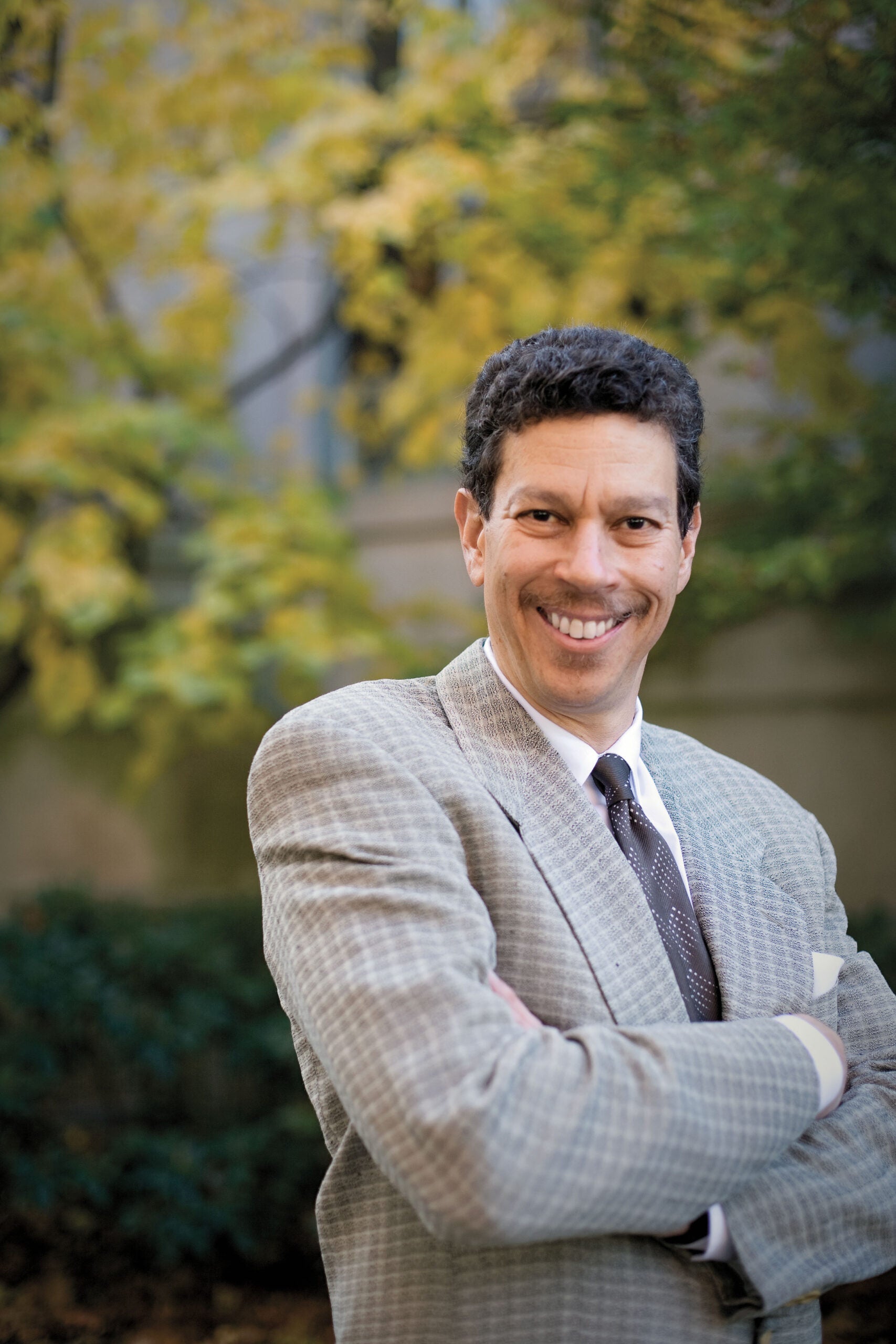A nationwide, longitudinal survey of today’s young J.D.s yields its first results
Lawyers are happier in their careers than is generally believed—in the first few years out of law school, anyway.
That’s just one of the findings of a wide-ranging study being conducted by Professor David B. Wilkins ’80 and the HLS Center on Lawyers and the Professional Services Industry, together with several organizations, including the National Association for Law Placement and the American Bar Foundation.
The study—“After the JD”—is tracking nearly 4,000 lawyers over the first 10 years of their careers. Its first installment—a snapshot of lawyers two to three years into their careers—has already unearthed a wealth of information, including what kind of jobs they take, how much money they make, how much educational debt they are carrying and how much they enjoy their work—cross-tabulated by gender, race and other factors.
“This is the first longitudinal study of its kind,” says Wilkins, director of the center and one of the study’s principal researchers. And, while the study raises more questions than it answers, the empirical data it is producing are invaluable to law students, firms and academics negotiating the rapidly changing state of the legal profession, he says.
The respondents, who began practice in 2000, are 46 percent women and 17 percent nonwhite lawyers and are from 18 regions and nearly every law school in the country (including unaccredited schools). They were first surveyed in 2003 (and their responses were tabulated for the initial report), and they will be questioned again in 2007 and 2011.
The median income of the full-time lawyers surveyed was $73,000, a figure based on a wide range of salaries depending on work setting and geographic location. About 25 percent of respondents reported making more than $110,000, while the same percentage earned less than $50,000. Predictably, those in large private firms took home the highest salaries, although the range there was significant—from a low of $100,000 in Minneapolis to highs of $170,000 in New York City and $172,500 in Connecticut.
Job satisfaction is one aspect of the responses that Wilkins finds most interesting. According to the study, and contrary to what many believe, there is “no evidence” of “any pervasive unhappiness in the profession,” he says—at least not among those who began practicing in 2000. To the contrary, in that group, nearly three-quarters reported being “satisfied” or “very satisfied” with their jobs.
However, the study also found that, depending on work setting, lawyers were more satisfied with some aspects of the job than others. “If you look at lawyers in large firms,” says Wilkins, “they are very satisfied with their power and prestige, but very dissatisfied with the context of their work, including the mentoring and training they receive. Government lawyers are very satisfied with the context and public service aspects of their work, but dissatisfied with the money. So you can see how different jobs have different mixes of goods.”
While this may seem obvious, Wilkins hopes to use the empirical data to enable law students to make informed choices about careers by recognizing what matters most to them. “We really are out to try to change the way in which law schools teach about careers,” he says.
This message is behind a new 1L career-counseling program beginning this fall at HLS, sponsored by the Office of Career Services and the Bernard Koteen Office of Public Interest Advising. The two offices will maintain a unified calendar of programming and events to guide students through career exploration and the practical aspects of looking for summer jobs, and every first-year student will have an assigned career counselor for a first appointment. In addition, Wilkins will conduct an orientation on careers and the profession.
Racial disparities were much less significant in many aspects of the study than gender disparities, Wilkins notes. More than 80 percent of black attorneys and almost 80 percent of Hispanic attorneys report being satisfied with the decision to become lawyers, compared to about 75 percent of whites. Yet differences remain. For example, at firms with more than 250 lawyers, 67 percent of black attorneys plan to leave within two years, compared to 54 percent of white attorneys.
However, women lawyers reported being significantly less satisfied in their work lives than men did, Wilkins notes (see story). While women are happier than men in the substance of their work, they are much less happy by three other measures: job setting (including recognition received at work and relationships with colleagues), the social value of what they do and power track (including money and opportunity for advancement).
One of the most striking findings is that, even three years into their careers, women lawyers were earning less than men in many instances, regardless of the work setting. The median salary for men was $80,000; for women, it was $66,000. This gender gap is one aspect that researchers plan to study more carefully.
To see the initial report, go to www.abf-sociolegal.org/afterjd.html.
